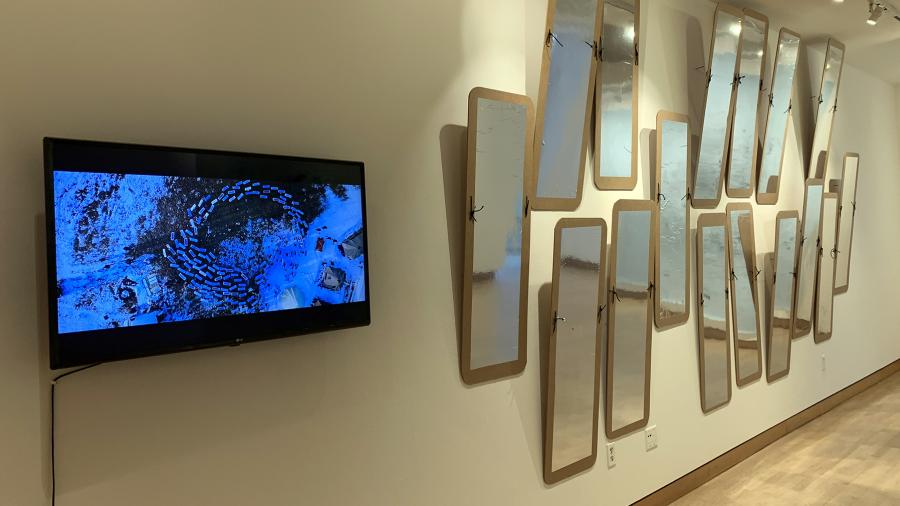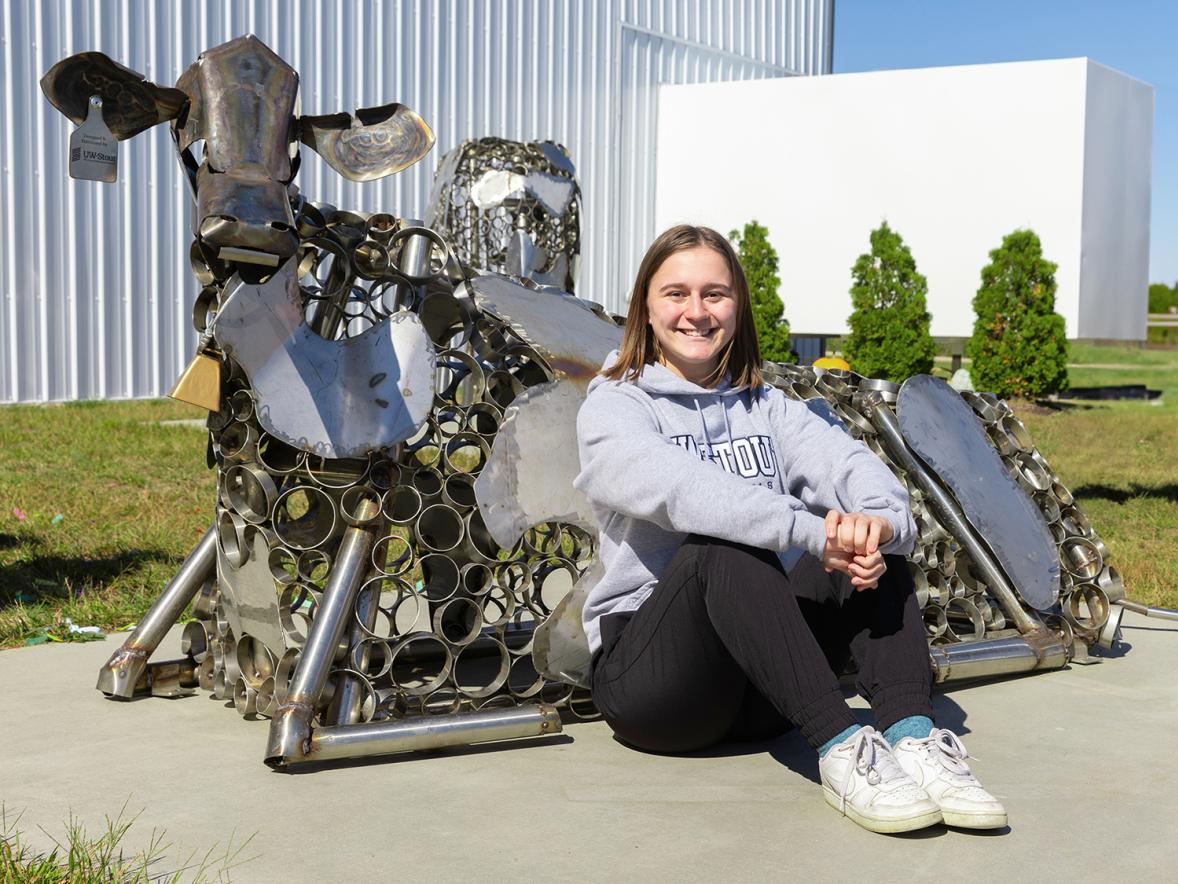The word landholder and its derivative “to hold the land” would seem to have the same meaning, but to artist Witt Siasoco they conjure something very different.
Siasoco delves deeply into the differences with To Hold the Land, the title of an exhibit he has curated featuring 11 artists at University of Wisconsin-Stout’s Furlong Gallery. The exhibit runs through Saturday, Dec. 18. A reception is planned from 5 to 7 p.m. on Thursday, Nov. 18.
“To hold the land,” he says, “calls up an image ideologically opposed to notions of the ‘land holder,’ one who is a steward of the land. I envision cupped hands, a loving embrace of land,” he said.
“But it’s also an image of resistance: holding something dear to prevent it from being taken away — from racist policies that bar equal access, from extractive industries and polluters, from entities infringing on Indigenous sovereignty,” Siasoco said.

The seeds for the exhibit were planted about a year ago when Siasoco participated in a Stop Line 3 demonstration in northern Minnesota during the Enbridge Line 3 oil pipeline project. He met and was inspired by Winona LaDuke, a Native American activist.
“It’s not just an Indigenous people’s movement. We have to all think about our relationship to the land,” said Siasoco, who grew up in Des Moines, Iowa, and lives in Minneapolis.
“To hold the land” can be what people take and give back, or extraction vs. contribution, he said.
“The issues of natural resource extraction greatly impact communities in the region. Specifically, the complex dilemma of local jobs versus extractive industries can be seen in iron ore mining in northern Minnesota, as well as sand mining near Menomonie,” Siasoco said.
Covering the north and south exhibit spaces at the gallery, To Hold the Land includes photographs, portraits, 3D objects, a teepee, video, a story carved on pieces of sugar maple and fabric art.

The artists explore social and environmental issues related to the land. “It’s important for me to connect with community. That’s a theme that guides me, relationships,” he said.
Siasoco said the artists he chose for the exhibit, like him, work in the galleries but more importantly participate on a civic level. In fact, two of the items on exhibit, mirror shields and a teepee, are replicas of items that were used recently in the pipeline demonstrations in Minnesota. When the exhibit ends, those items are expected to be used in future Stop Line 3 demonstrations.
The mirror shields were made by a group of UW-Stout School of Art and Design students while working with artist Cannupa Hanska Luger, who was raised on the Standing Rock Reservation in North Dakota, an area deeply impacted by the effects of oil pipelines.
The shields, mirrored vinyl on Masonite, are similar to those used in the Mirror Shield Project that began in 2016 during a pipeline protest near Standing Rock. Luger invited people to create mirrored shields, and more than 1,000 arrived. The project has since been used in resistance movements around the world.
A video of those shields in use accompanies the new shields at Furlong Gallery.
Other examples from the exhibit include:
- Julie Renee Benda, who grew up in Michigan’s Upper Peninsula: a series of logs from her family’s homestead. The logs adorn writings that grapple with the complexity of land ownership.
- Alexa Horochowski, of Minneapolis: vortex drawings using trash like packing peanuts and aluminum cans coated in various substances and tumbled with barrel fans on sheets of Tyvek material. “The drawings touch on the issues of environmental degradation and mass consumerism, in particular the North Pacific Gyre, a sea of plastic in the middle of the ocean,” she said.
- Mike Hoyt, of Minneapolis and a Minnesota-born Kanaka Maoli artist: portraits from Free the Deeds, a project to raise awareness of racial housing covenants from the 1910s to the 1950s that made it illegal for nonwhite people to live there.
Siasoco also is a graphic designer and arts educator who has worked with the City of Minneapolis and for the Walker Art Center and Minneapolis Institute of Art. He recently received a visual artist fellowship from the Jerome Foundation.
He hopes that To Hold the Land can continue with exhibits at other galleries.
###







